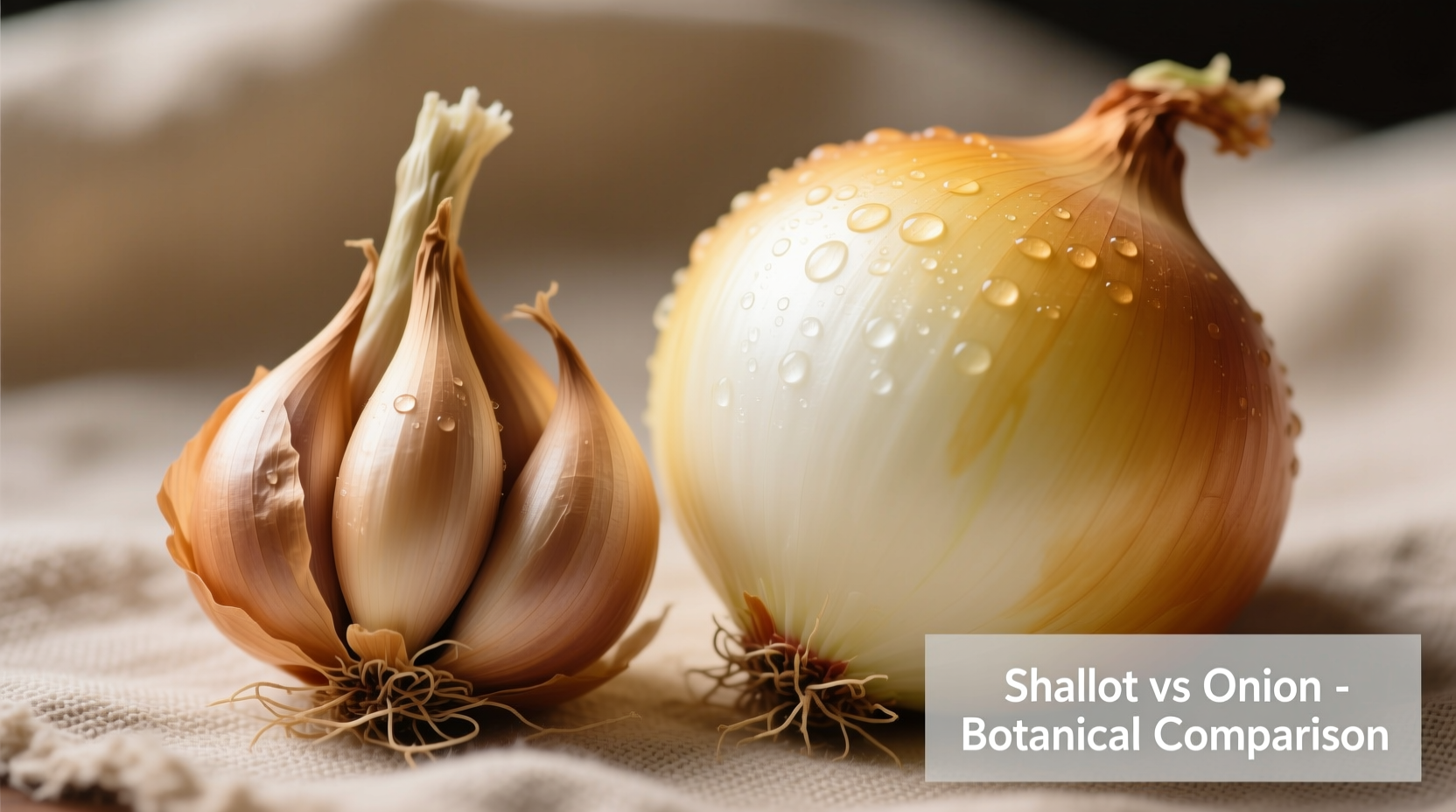Spot the Difference: Your Visual Guide to Shallots and Onions
Ever stood confused in the produce aisle, wondering whether those small, elongated bulbs are shallots or just tiny onions? You're not alone. Understanding the visual differences between shallots and onions is crucial for recipe accuracy and flavor development. This guide provides clear visual identification markers so you'll never mistake one for the other again.
What Makes Shallots Visually Unique
Shallots (Allium cepa var. aggregatum) have distinctive physical characteristics that set them apart from regular onions. Unlike standard onions that grow as single bulbs, shallots develop in clusters with multiple cloves enclosed in a single skin. Their shape is typically more elongated and tapered, resembling small pears rather than perfect spheres.
The skin color of shallots ranges from coppery-brown to deep reddish-purple, often with a subtle sheen that distinguishes them from the more matte finish of yellow onions. When cut open, shallots reveal interior layers that are usually pale purple or grayish-white, with cloves clearly separated like garlic.
| Visual Characteristic | Shallot | Regular Onion |
|---|---|---|
| Shape | Elongated, tapered, often with pointed ends | Rounded, spherical or slightly flattened |
| Skin Texture | Thin, smooth, often with coppery sheen | Thicker, more papery, matte finish |
| Internal Structure | Multiple distinct cloves (2-6) | Concentric rings forming single bulb |
| Color Range | Copper-brown, reddish-purple | White, yellow, red/purple |
| Size Range | Generally smaller (1-3 inches) | Larger (2-5 inches common) |
Practical Identification Tips for Grocery Shopping
When selecting shallots at your local market, look for firm bulbs with dry, intact skin. The best shallots feel heavy for their size with no soft spots or sprouting. Unlike onions which are typically sold individually, shallots often come in mesh bags containing multiple bulbs still connected at the root.
Avoid confusing shallots with pearl onions, which are small, round, and white—often used for pickling. True shallots maintain their distinctive elongated shape regardless of size. French gray shallots (also called griselle) have a more subtle, grayish-brown skin and are considered superior for their delicate flavor, but they're harder to find in standard grocery stores.

When Visual Identification Matters in Cooking
The visual differences between shallots and onions aren't just academic—they directly impact your cooking results. Shallots' multi-clove structure means they caramelize more evenly and quickly than regular onions. Their thinner skin makes peeling easier, especially when using the boiling water method.
Chef Thomas Keller's Ad Hoc at Home cookbook emphasizes that "the visual distinction between shallots and onions is critical for French cooking techniques." When recipes specifically call for shallots, substituting regular onions will alter both flavor profile and texture. This is particularly important in vinaigrettes, where shallots' milder flavor won't overpower delicate dressings.
According to USDA agricultural research, shallots contain different proportions of flavor compounds compared to regular onions, which explains their more subtle, complex taste. This biochemical difference is reflected in their visual structure—shallots' separated cloves indicate a different growth pattern that affects their sugar and sulfur content.
Avoiding Common Visual Misidentifications
Many grocery stores now sell "shallot onions"—a marketing term for small onions that aren't true shallots. These imposters lack the characteristic cloves and have the concentric ring structure of regular onions. True shallots will always show that distinctive multi-clove interior when cut.
Seasonal availability also provides visual clues. True shallots are typically in peak season from late summer through winter, when their skin appears vibrant and taut. Off-season shallots may look shriveled or dry, indicating reduced flavor quality. In contrast, regular onions have a much longer shelf life and maintain their appearance for months when stored properly.
Preserving Visual Quality After Purchase
Proper storage maintains the visual characteristics that help identify quality shallots. Store them in a cool, dark, well-ventilated space—never in plastic bags which promote moisture and spoilage. Good air circulation prevents the skin from becoming damp and developing mold, which often starts at the root end.
Unlike regular onions which can be refrigerated when cut, shallots lose their distinctive texture more quickly when chilled. For best results, use shallots within two weeks of purchase. As they age, their skin becomes brittle and the cloves separate more easily, which can be mistaken for spoilage but is actually a natural progression.











 浙公网安备
33010002000092号
浙公网安备
33010002000092号 浙B2-20120091-4
浙B2-20120091-4